| Botanical Name |
|
| Family |
Amaryllidaceae - The amaryllis family. |
| Pronunciation |
|
| Common Name(s) |
|
| Plant Group |
- Bulb / Corm / Rhizome / Tuber / Epigeal bulb Bulbs: are made up of fleshy scales as in an onion
Corm: a short, swollen, underground stem that is hard and not fleshy as in a gladiolus
Tuber: a solid, fleshy, underground, storage organ as in a potato
Rhizome: an underground, horizontal, swollen stem at the base of the plant as in an iris
Epigeal bulb: bulbs that rest above the ground with only the roots anchoring the plant to the earth as in albuca
- Veld Flower Small veld flowers of interest, rather than for their usefulness in the garden. Some of these plants have garden potential, particularly for less formal garden situations.
|
| Plant Size |
- Very Small
| Tree | 3m to 4m |
| Shrub | 25cm to 50cm |
| Perennial/ground cover | Up to 10cm |
| Bulb | 10cm to 20cm |
| Succulent | Up to 5cm |
|
| Position |
- Light or Dappled Shade Found below trees with sparse, open foliage. Ideal for the protection of herbaceous plants.
- Partial Shade The area is in shade for part of the day and in full sun for part of the day.
- Sun The area is in full sun for all or most of the day, all year round.
|
| General Information |
- Deciduous Plants which completely lose their foliage for part of the year.
- Drought Tolerance: High The plant is well adapted to arid conditions; it can survive long periods of drought and high temperatures without extra water.
- Water Wise Plant species originating from low rainfall regions that require less water to survive and thrive than other plant species.
|
| Specific Information |
Cyrtanthus clavatus is a small variety of cyrtanthus. Flowering is dependent on rain. Flowers last only two to three days, sending up one or two more sets of flowers every two to three weeks, depending of rainfall. Two to four very narrow lax leaves appear after flowering - impossible to find in their grassy habitat. More of a collector's item than a viable garden plant.
|
| Ad Break |
|
| Flowers |
| Description |
small trumpet-shaped with pink, brown or greenish stripe
|
| Season |
- Spring to Summer Plants will seldom bloom for the entire season as given in the list, but should flower during a period within these parameters.
|
| Colour |
|
| Growth Rate |
- Slow Specifying growth rate can be very misleading as there is considerable variation of growth rate depending on type and species of plant, available water, supplementary feeding, mulching and general care, as well as the plants suitability and adaptability to the garden environment.
|
| Plant Uses |
- Attracts bees, butterflies or other insects This plant attracts insects which can be food for birds or other creatures in your garden.
- Container Trees, shrubs and ornamental species that can adapt to growing in a restricted environment.
- Pot Plant A plant that needs a protected environment on a patio or indoors.
- Rock Garden An area constructed of larger rocks, arranged naturally, to emphasise the use of stones as a main element. Generally plants used do not need a lot of care.
- Wild Garden An indigenous garden planted for the benefit of wildlife and birds. Provides food, water, a variety of mini-biomes and no poisonous chemicals are used.
|
| Distribution and Habitat |
endemic to the Eastern Cape, in grassy fields
|
| Planting Suggestions |
I have no data about the performance of this species in a garden situation. They grow and flower well in the veld garden in an area of dry, gravelly, limestone soil. Flowers appear within a week after rain. Plant shallowly (with the bulb "shoulder" just below the soil surface) in a sharply drained, loam-based soil.
A limited quantity of bulbs and/or seed are made available after seeding is over - around February to March. Seeds only last for about three months and must be sown fresh.
|
| Medicinal Uses |
|
| Ad Break |
|


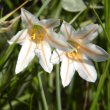
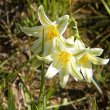
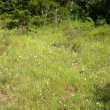
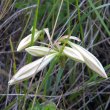
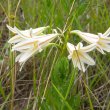
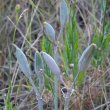
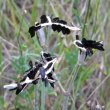
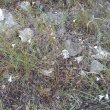

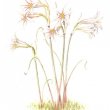


Comments
cyrtanthus clavatus in garden
I received three bulbs from a friend on a farm near Jeffrey's bay. I planted them in a pot and forgot about them for 6 months. This made them dry out completely. Feeling guilty about neglecting these little gems I planted them out in the garden during late winter. I started watering them and was surprised to see all three bulbs sprouting. All three flowered in early summer. They were planted in poor quality, rocky soil with lots of sun and a very warm climate. (I'm from Malelane, mpumalanga.)
Cyrtanthus clavatus - growing conditions
Hello Johann
It is astounding how much punishment some plants can overcome. The clavatus bulbs in my garden have elected to grow on a limestone outcrop with poor soil that drains very fast - the worst soil I have in the garden. It seems they prefer austere conditions.I am interested to hear that they have managed the transfer to your hot conditions.
Discuss this plant
Share knowledge, ask a question or give an experience.